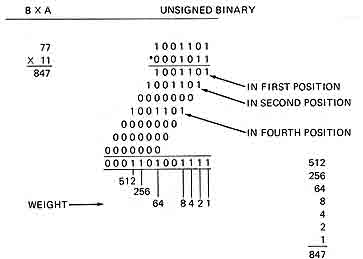Bit-Slice Design: Controllers and ALUs
by Donnamaie E. White
Copyright © 1996, 2001, 2002 Donnamaie E. White
- Pre-Introduction
- Selection of the Implementation
- Microprogramming
- Advantages of LSI
- The 2900 Family
- Language Interrelationships
- Controller Design
- Constructing the CCU
- Sequential Execution
- Multiple Sequences
- Start Addresses
- Mapping PROM
- Unconditional Branch
- Conditional Branch
- Timing Considerations
- Pipelining
- Improved Architecture
3. Adding Programming
Support to the Controller
- Expanded Testing
- Subroutines
- Nested Subroutines
- Stack Size
- Loops
- Am29811
- Am2909/11
- CASE Statement (Am29803A)
- Microprogram Memory
- Status Polling
- Interrupt Servicing
- Implementation - Interrupt Request Signals
- Vector Mapping PROM
- Next Address Control
- Am2910
- Am2910 Instructions
- Control Lines
- Interrupt Handling
- Am2914
- Interconnection of the Am2914
6. The ALU and Basic Arithmetic
- Further Enhancements
- Instruction Fields
- Instruction Set Extensions
- Sample Operations
- Arithmetic -- General
- Multiplication with the Am2901
- Am2903 Multiply
The ALU and Basic ArithmeticLast Edit November 1, 1996; May 1, 1999 ; July 15, 2001 Arithmetic - GeneralThe Am2901 and Am2903 perform two's complement arithmetic. Two's complement notation is a weighted binary code, where the sign bit (most significant bit) has a negative weight. For example, for an 8-bit system The negative number encoding can be formed by logically complementing all bits abd adding 1 to the encoding of the positive number. The advantage of the two's complement number system is that there is a single zero. The numbers are normally considered to be binary fractions, so that a positive number is less than 1 and a negative number is greater than 1. AdditionAddition is performed as a straightforward binary addition, with the sign of the result dependent on the signs of the operands. For two positive numbers the sign is positive, and for two negative numbers it is negative. A check should always be made for overflow, which is possible when the sums of the magnitudes exceed 1. The Am2901 and the Am2903 both provide an overflow pin. SubtractionSUbtraction is processed in the same manne as addition, i.e., complement the subtrahend and add. Both the Am2901 and Am2903 provide two subtraction operations, A - b and B - A. MultiplicationThe most difficult of the arithmetic operations so far is multiplication. Unsigned BinaryTo perform B x A in two's complement, where the numbers are either both unsigned or both positive, the procedure is the same as for binary multiplication. The multiplier is examined bit by bitright to left (least significant to most significant bit) to determine if the multiplicand is to be added to the partial result. If so, the multiplicand is aligned so that the least significant is under the multiplier bit's position, as shown in Figure 6-5. Figure 6-5 Unsigned binary multiplication |

